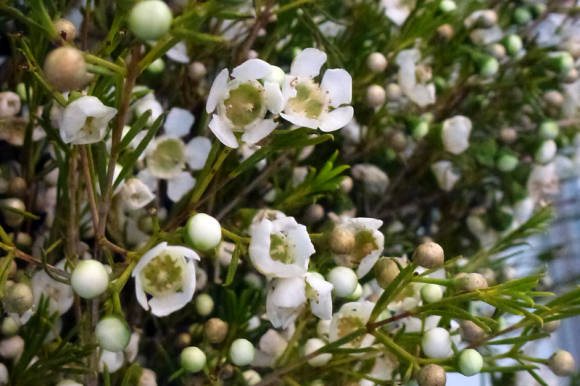 |
The growing conditions of aeschinanthus (tropical rainforests and mountain forests) and the way of life in nature determine the rules for keeping them at home.
The endurance of plants to some extent depends on the species and variety, but all eschinanthuses do not tolerate sub-zero temperatures and are grown in warm greenhouses, conservatories and heated premises.
Light Aeschinanthus prefer bright, diffused. Many varieties are shade-tolerant, with a lack of light, they can grow, but there will be no flowering and even decorative-deciduous varieties will lose their brightness and attractiveness. For the manifestation of all varietal qualities, it is necessary to find a place with sufficient lighting.
Priming. As leading an epiphytic lifestyle, Aeschinanthus prefer small pots or baskets filled with light, loose and well-drained soil. From ready-made mixtures, soil is suitable for epiphytic plants, for bromeliads, light soils based on high peat, mixtures for violets. To ensure better drainage, you can add sand or perlite, to ensure looseness and moisture capacity - sphagnum and perlite. Adding rotten leaf litter will work well, but you should not add sod land.
Transfer produced if necessary by careful transfer to a slightly larger pot. The root system of Aeschinanthus is not very developed, so you cannot plant plants in too large containers, the maximum pot for an adult specimen is 18 cm in diameter.For Aeschinanthus, choose hanging pots or baskets, you can take wall pots or place plants on a flower stand so that the shoots are free hanging down.
Watering regular and moderate, water after irrigation should not linger, the roots need constant access to air. Aeschinanthuses do not so much suffer from some dryness as from excessive watering. In the summer, keep the soil constantly wet, watering after the top layer has dried. In winter, when it is cool, reduce watering, but do not let the soil dry out completely. Watering must be done from above, with slightly warm and soft water.
 |
Top dressing... Aeschinanthus are fed with half doses of universal fertilizers every 2-3 weeks from March to August, in autumn and winter all feeding is canceled.
Temperature. As plants of tropical rainforests, Aeschinanthus prefer warmth, in summer the optimum temperature is between + 22 + 26 ° C, too high temperatures inhibit the plants. In winter, due to low light, it is better to keep them in some coolness, at + 18 ° C, in December-in January, reduce the temperature to + 16 ° C, while reducing watering - such a wintering will have a good effect on the subsequent flowering.
Air humidity high, in spring and summer, plants can be sprayed with a fine spray. In winter, when kept cool, spray the air next to the plant, being careful not to get on the pubescent leaves.
Reproduction. Under indoor conditions, Aeschinanthus easily propagate by stem cuttings. The stems are cut into pieces about 10 cm long and rooted in water, a mixture of peat and sand, in moist perlite. It is recommended to use the root formation stimulator Kornevin. The temperature of the greenhouse for rooting is about + 25 ° C. After the formation of roots, several cuttings are planted in one pot.
Aeschinantus can be propagated by sowing seeds. The seeds are small, they are sown on a wet peat mixture, covered with glass or foil. After the seedlings grow up, they are dived, then they are planted in several pieces in one pot.
Pests. Aeschinanthuses are affected by thrips, aphids, scale insects, mealybugs, and ticks.
About control measures in detail - in the article Houseplant pests and control measures.
Possible growing problems
- No flowering or flowering is scarce - the plant lacks light or there was no dormant period with a decrease in temperature in winter.
- Spots appear on the leaves - the cause may be sunburn, cold drafts, watering with cold water, waterlogging or overdrying of the substrate. With insufficient ventilation, low temperatures and high humidity, the plant can become vulnerable to fungal diseases.
- Leaves fall - the plant has undergone sudden changes in temperature, or irrigation has been disturbed.









